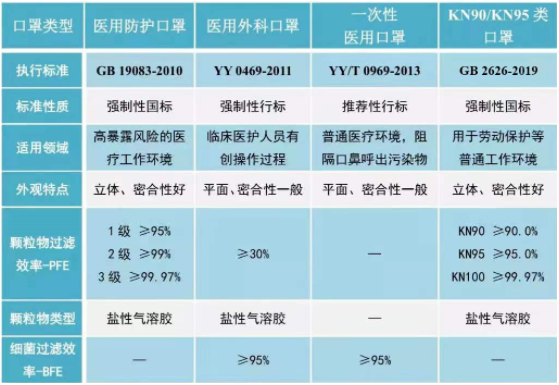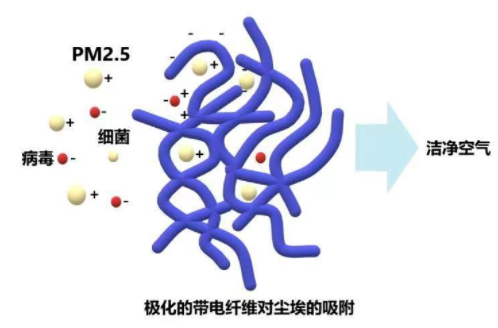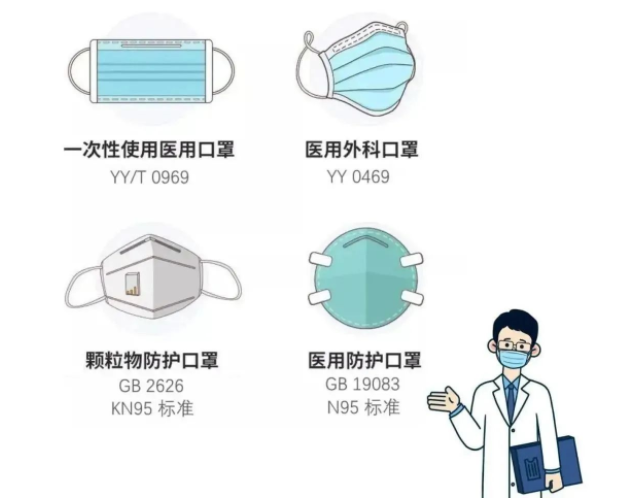Can't blow out is a barrier effect?
Blow it out can't be anti-virus?
Before jumping to conclusions
We might as well follow the professionals to take a look
↓↓↓
Learn the principles
1. Masks are mainly used to block aerosols carrying Novel Coronavirus particles.
2. The key safety index of masks is [particulate filtering efficiency]. Only when this index reaches the standard can aerosol be effectively blocked.
3. Respiratory resistance (also known as ventilatory resistance or airflow resistance) refers to the ability of airflow through the mask. It is a performance indicator of the mask and represents the comfort level of breathing while wearing the mask.
4. There is no necessary connection between respiratory resistance and filtration efficiency. In the case of qualified filtration efficiency, the smaller the respiratory resistance, the more comfortable the wearer feels.

1. "Ventilation of the mask" can reflect the respiratory resistance of the mask to a certain extent, which is clearly stipulated in different national standards.
GB 19083-2010 Technical Requirements for Medical Protective Masks requires that airflow resistance should not exceed 343.2Pa, which is not the standard for medical masks, for example: T/CNTAC 55-2020 for civil protective masks requires a maximum of 49Pa (for adults), and T/CTCA 7-2019 for common protective masks requires a maximum of 80Pa.
It can be seen that, in order to ensure the comfort of the wearer, the relevant standards of masks put forward upper limits on respiratory resistance.
2. The particulate filtering efficiency of masks is a decisive indicator for the quality and safety of masks
Particle filtering efficiency refers to the ability of respirator to block particles. The higher the filtering efficiency, the better the performance of aerosol blocking. The barrier ability of respirator to particles depends on physical barrier on the one hand, and on the other hand, the electrostatic adsorption of melt-blown cloth in the middle layer plays a key role, which is not necessarily related to respiratory resistance.

3. It is not true that "masks breathe" means that "masks do not block viruses"
The breathability of the mask means that the respiratory resistance of the mask is relatively small, but it does not mean that the filtering efficiency of the mask does not meet the requirements. Under the continuous supervision and orderly promotion of government departments, enterprises have gradually adopted higher national standards. Compared with the old standard, the new mandatory national standard GB 2626-2019 for respirators for particulate matter mainly improves the comfort level of users by reducing the exhalation and inspiratory resistance without changing the filtration efficiency.
4. Zero tolerance for the quality and safety of epidemic prevention products
Since early 2020 COVID - 19 outbreak in the city, the city's drug regulatory department of surgical masks, the supervision department of the market in the city of epidemic prevention products such as non surgical masks conducted uninterruptedly of epidemic prevention products such as law enforcement inspection and product quality supervision and spot check tracking, illegal behavior for producing unqualified masks and other quality keep high pressure situation, achieve "zero tolerance".
1. Choose the right mask for different scenarios. The National Health Commission's Guidelines on Wearing Masks for the Public and Key Occupational Groups (August 2021 edition) suggests that, in view of the characteristics of novel Coronavirus variants and the epidemic characteristics of the population at the present stage, the public is advised to choose disposable medical masks, surgical masks or masks of protective grade above. At the same time, the city also made guidance on "how to do a good job of personal protection for urban operation support personnel after the division of the three districts," and recommended that masks be replaced with KN95 or N95 or higher protection level masks for enhanced first-level protection and second-level protection objects.
2. Identify different types of masks by standards. Medical masks and non-medical masks are subject to different national/industry standards (see figure below), while some non-medical masks are subject to group standards and enterprise standards.

3. Don't trust Internet videos. Some online videos suggest wearing a mask and blowing on a lighter to determine whether the mask is qualified or not, which is unscientific and groundless. The mask material will burn and melt after continuous contact with an open flame. The practice in the GIF has certain risks, so please do not try.








